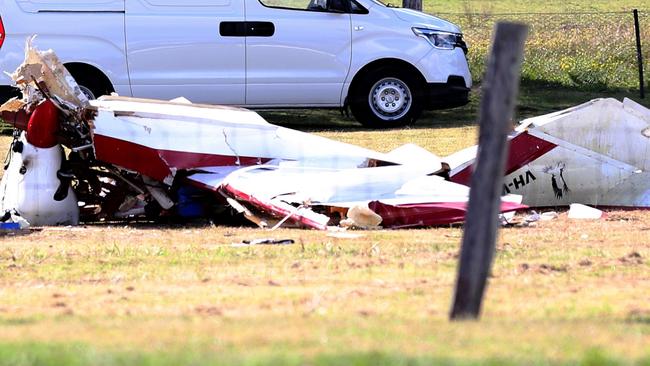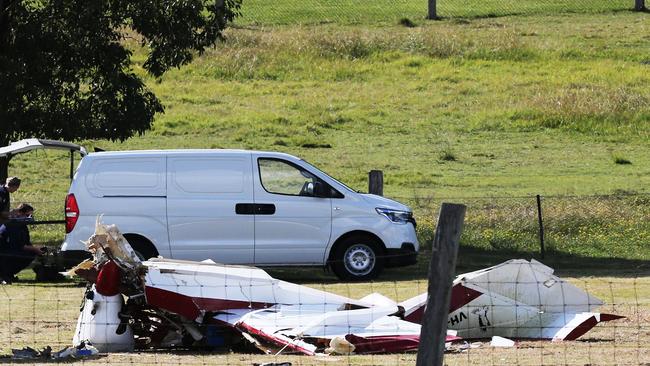Faulty air cooler fitting blamed for plane crash that killed pilot Andy Shepherd near Maitland
It was Andy Shepherd’s second flight in the privately owned plane when white smoke was seen coming from the engine shortly after takeoff at Maitland. A report has now identified what went wrong.
Newcastle
Don't miss out on the headlines from Newcastle. Followed categories will be added to My News.
A damaged engine oil cooler fitting was the likely cause of a plane crash which killed pilot Andy Shepherd near Maitland airport in 2020, a report into the fatal crash claims.
The Australian Transport Safety Bureau released its final report on Monday into the May 17, 2020 crash which killed the 44-year-old Englishman shortly after take off.
The bureau found the use of a damaged engine oil cooler fitting, which was not compatible with the fitted oil hose, most likely resulted in the hose disconnecting from the oil cooler during the climb from takeoff and the engine’s loss of oil.

“A partial loss of engine power event of this kind is a more complex scenario for a pilot to face than complete engine power loss,” ATSB Director Transport Safety Stuart Macleod said in a statement.
“Pilots can be strongly influenced by the fact the engine is still providing some power, and often by the strong desire to return the aircraft to the runway to avoid damaging the aircraft in a forced landing.
“In this case the pilot’s decision to change from runway 23 to runway 05 meant the aircraft needed to stay airborne longer, necessitating more power from the damaged engine to maintain height.”
Mr Shepherd was on his second test flight in the plane, which had been built by private and amateur builders.

While passing through 2,400ft, Mr Shepherd was told via radio that white smoke was coming from the aircraft’s engine, the report said.
Mr Shepherd replied that the engine was not running smoothly and he would return to land at the airport.
However, the engine failed as he attempted to turn the aircraft and it crashed into a nearby field at Windella.
“During the final stage of the glide approach, the aircraft was observed to abruptly roll, pitch down and collide with the ground,” Mr Macleod said.
The bureau said in a statement that the investigation had also identified that the required, and the majority of the recommended, build inspections of the aircraft were not conducted, and that was “not detected prior to the issuance of a certificate of airworthiness that permitted the aircraft to be flown.”

“While these inspections would probably not have detected the damaged oil cooler fitting, they may have identified the oil supply hose was in poor condition,” Mr Macleod said.
“They would also have been an opportunity to identify and improve the overall build quality of the aircraft.”
The report said the bureau also identified a number of other deficiencies relating to the inspection and flight testing of amateur-built aircraft, including the risk assessment of the proposed test pilot.
“This accident also highlights the importance of adhering to the design specifications and good engineering practices when building an amateur-built experimental aircraft,” Mr Macleod said.
“Attention should be given to the component manufacturer’s specifications, installation instructions and limitations to ensure the component, and consequently the aircraft, will perform as intended.”



